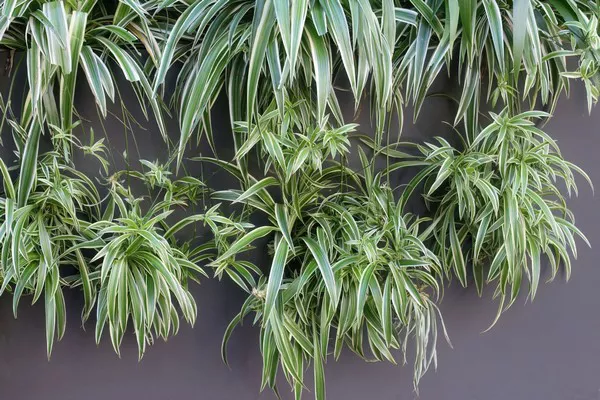Hanging plants add a touch of elegance, serenity, and natural beauty to any indoor or outdoor space. Their cascading foliage and vibrant blooms not only enhance the aesthetics but also purify the air and promote a sense of well-being. In this comprehensive guide, we will explore the most common hanging plants, their care requirements, and how to incorporate them into your home or garden decor.
Introduction to Hanging Plants
Hanging plants have been cherished for centuries for their ability to elevate any space with their grace and beauty. Whether suspended from the ceiling, placed on a high shelf, or trailing down a wall-mounted planter, these plants create a striking visual impact while also offering numerous benefits.
From lush foliage to colorful blooms, hanging plants come in a wide variety of shapes, sizes, and textures, making them versatile additions to any interior or exterior design scheme. They can be used to brighten up dull corners, create natural partitions, or simply bring a slice of the outdoors inside.
In addition to their decorative appeal, hanging plants offer several practical advantages. They can help improve indoor air quality by absorbing toxins and releasing oxygen, thus creating a healthier living environment. Furthermore, caring for hanging plants can be a rewarding hobby that promotes relaxation and mindfulness.
In this article, we will delve into the world of hanging plants, exploring some of the most popular varieties, their unique characteristics, and essential care tips to ensure their thriving growth.
6 Most Common Hanging Plants
1. Pothos (Epipremnum aureum)
Pothos, also known as devil’s ivy, is perhaps one of the most popular and resilient hanging plants. Loved for its heart-shaped leaves and trailing vines, pothos adds a touch of greenery to any space with minimal effort. This hardy plant can tolerate low light conditions and irregular watering, making it ideal for busy individuals or those new to plant care.
Pothos comes in several cultivars, including the classic golden pothos with its variegated green and yellow leaves, the solid green jade pothos, and the striking marble queen pothos with its creamy-white and green foliage. Regardless of the variety, pothos is known for its ability to purify the air by removing toxins such as formaldehyde and benzene.
To care for pothos, place it in bright, indirect light and water it when the top inch of soil feels dry to the touch. Avoid overwatering, as this can lead to root rot. Trim any leggy vines to encourage bushier growth and propagate new plants by rooting cuttings in water or soil.
2. Spider Plant (Chlorophytum comosum)
The spider plant is prized for its graceful arching leaves and air-purifying qualities, making it a popular choice for hanging baskets and macrame hangers. This resilient plant is easy to care for and produces small white flowers followed by baby spider plants, or spiderettes, which dangle from long stems.
Spider plants are adaptable to a wide range of growing conditions and can thrive in both bright indirect light and partial shade. They prefer well-draining soil and should be watered when the top inch of soil feels dry. Spider plants are known to remove toxins such as formaldehyde and carbon monoxide from the air, making them excellent additions to homes and offices.
To keep spider plants looking their best, remove any brown or yellowing leaves and prune away spent flower stalks. Propagate new plants by planting spiderette pups in fresh potting soil, or by rooting them in water until they develop roots.
3. String of Pearls (Senecio rowleyanus)
String of pearls is a unique and eye-catching succulent with trailing stems adorned with spherical, bead-like leaves. This distinctive plant adds a touch of whimsy to any space and looks stunning when cascading from a hanging planter or shelf.
String of pearls thrives in bright, indirect light and well-draining soil. Allow the soil to dry out between waterings, as overwatering can cause the delicate beads to rot. This plant is drought tolerant and prefers to be underwatered rather than overwatered.
To maintain the health and appearance of string of pearls, prune back any leggy stems and propagate new plants by planting stem cuttings in fresh soil. This succulent is relatively low-maintenance but benefits from occasional fertilization during the growing season to promote robust growth.
4. Boston Fern (Nephrolepis exaltata)
Boston ferns are classic hanging plants valued for their lush, feathery fronds and air-purifying properties. These ferns thrive in high humidity and filtered light, making them excellent choices for bathrooms or kitchens with ample natural light.
To care for a Boston fern, place it in a location with bright, indirect light and keep the soil consistently moist but not waterlogged. Mist the foliage regularly to increase humidity levels and prevent the tips of the fronds from turning br
own. Boston ferns benefit from occasional feeding with a balanced liquid fertilizer during the growing season to support healthy growth.
To keep Boston ferns looking their best, remove any dead or yellowing fronds and repot them as needed to accommodate their spreading root system. With proper care, Boston ferns can thrive for many years, bringing a touch of lush greenery to any indoor space.
5. English Ivy (Hedera helix)
English ivy is a versatile and fast-growing vine that adds a touch of old-world charm to any setting. Its glossy, lobed leaves can trail gracefully from hanging baskets or climb walls with the help of aerial rootlets, creating a verdant backdrop for any decor.
English ivy prefers bright, indirect light and well-draining soil that is kept consistently moist but not waterlogged. Regular pruning is essential to control its vigorous growth and prevent it from becoming invasive. English ivy is known to purify the air by removing toxins such as formaldehyde and benzene, making it a popular choice for indoor spaces.
To care for English ivy, trim back any overly long or leggy stems and pinch off new growth to encourage bushier growth. Keep an eye out for pests such as aphids or spider mites, and treat them promptly to prevent damage to the plant. With proper care, English ivy can thrive as a hanging plant or ground cover, adding beauty and elegance to any space.
6. Lipstick Plant (Aeschynanthus radicans)
The lipstick plant is a charming hanging plant named for its tubular flowers that resemble miniature lipsticks. This tropical plant produces glossy green foliage and vibrant red or orange blooms that dangle from trailing stems, creating a striking display.
Lipstick plants thrive in bright, indirect light and require consistently moist soil to thrive. Allow the top inch of soil to dry out between waterings, and avoid overwatering, as this can cause root rot. Lipstick plants benefit from regular fertilization during the growing season to support healthy growth and flowering.
To care for a lipstick plant, prune away any dead or leggy stems and pinch back new growth to encourage branching. Provide support for the trailing stems if necessary, as they can become heavy when laden with flowers. With proper care, lipstick plants can bloom prolifically and add a splash of color to any indoor space.
See Also: 5 Most Common Carnivorous Plant Varieties
Conclusion
Hanging plants are a versatile and elegant way to enhance any indoor or outdoor space with their beauty and charm. Whether you prefer lush foliage or vibrant blooms, there is a hanging plant to suit every taste and style. By selecting the right plants and providing them with proper care, you can enjoy the many benefits of hanging plants while creating a serene and inviting atmosphere in your home or garden. So why not bring a touch of greenery into your life with a stunning hanging plant today?
You Might Be Interested In:


























